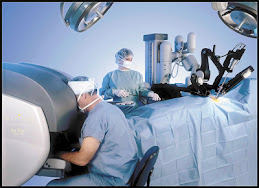http://icvts.ctsnetjournals.org/cgi/rapidpdf/icvts.2007.158626v1
Article in Interactive Cardiovascular and Thoracic
September 10th, 2007
It is known that heart disease is the leading cause of death in the U.S. today. While there are several major risk factors that most people know, such as high blood pressure, high cholesterol, and diabetes, one that is not talked about as much is atrial septal defect [ASD], which affects about 4 in 100,000 people. It is a congenital defect that is essentially an opening in the wall between the right and left atria, leading to inefficient distribution of oxygenated blood.
In this article, we found that the da Vinci surgical robot, mentioned in another article as well, was used to complete the entire operation for ASD repair. While ASD repair is done relatively free of any complications via median sternotomy and cardoplegic arrest, there have still been deaths that have resulted. Additionally, a particularly important goal in many surgeries today is to prevent big, unsightly scars. Lastly, This is where the da Vinci surgical robot comes in with its accurate precision and visualization, as well as a less painful procedure that looks much better afterwards. The article reports that the robotic closure of an ASD in a child was carried out without a sternotomy, thoracotomy, or cardioplegic arrest.
Of course, the robot has faced difficulties with limited space shorter ischemic times, and such for performing surgery on small children, but the article states that alterations were made to the machine and procedure to accommodate these challenges. Using the da Vinci robot for ASD repair is just one of many examples of how robotic surgery has improved a procedure in the medical world.
Subscribe to:
Post Comments (Atom)

1 comment:
Dr. Anupam Goel is a very well-regarded Bariatric Surgeon in Chandigarh and is recognized to have offered safe, accurate and effective weight-loss surgeries using high-technology laparoscopic and robotic methods. Having performed more than 3,000 successful bariatric surgeries in his records, he has helped a number of people regain their confidence and live better lives. Dr. Goel will do personalized bariatric surgeries, including Gastric Bypass, Sleeve Gastrectomy, and Revision Bariatric Surgeries. His model is based on the concept of not merely on surgical excellence; it dwells on lifestyle change, dietary counseling, and post-surgical treatment to guarantee long-term outcomes.
Post a Comment